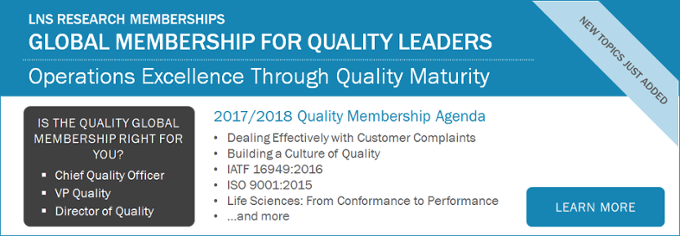Every month I am briefed by a few dozen quality leaders regarding their current initiatives. One prominent recurring theme is the struggle to gain top management priority and financing support for larger quality technology projects, such as EQMS (Enterprise Quality Management Software). Money for quality tech can be slippery even for those with a pressing need, but making these common mistakes really compounds the problem.
Click here to speak with Dan Jacob
Business Case Last
It’s surprising how often organizations expend effort to select technology without ensuring that they are solving a problem, which is meaningful outside their department. Very often, teams pursue technology because they are experiencing pain of some sort. “Our suppliers shut down production!” or “Our customers are screaming – could we have caught this in production or design?” or “Oh shoot we just failed the audit – wonder if that’ll cost us.”
All of these problems seem important to those in the midst of them, and teams have a notional idea of benefits. Often, if enough of these issues stack up, departments are compelled to find a solution. Unfortunately, they often defer computation of benefits as the last step and are left wondering why they can’t gain backing.
Solving any of the problems above is a reasonably large project, requiring funding, IT support, and support from other functions. Before tackling the technology, make sure it is aligned with strategic or operational objectives, and put some effort into quantifying the problem. Does your company want to be an innovation leader, have satisfied customers, improve market share, or have engaged employees? Find that out first and build a case around what you’ve found.
Doing your homework is going to be important to gain support. Also, you’ll likely find some levers you can pull to deliver value. You’ll want to make sure that the selected tech pulls these levers and gets you and your now larger team what you all need.
Wrong Financial Metric
The reason for your investment already exists. It’s creating hard and soft costs right now. A well-constructed business case quantifies this cost over time. Every day and week that goes by creates costs. Really, this has nothing to do with a purchase, Return on Investment (ROI), or Breakeven point because ROI and breakeven only matter when a purchase is made.
Really, it’s about Value and Time to Value. Make sure you’ve thought about both. Can you quantify the cost of this problem over the last 1, 5, or 10 years? That’s the value that the company did not get because this problem existed. Usually, that minimizes the actual cost of a fix, if the problem is sizable enough. Of course, this is related to ROI and breakeven. You’ll likely need to compute these too, but make sure to include the historical perspective.
The second piece is the Time to Value. It takes time to select, approve, purchase, deploy, adopt, and drive results from technology. This is important, but ignored in most ROI or Breakeven analyses. It is easy, but wrong, to focus on the time spent after the purchase and forget the 6 to 12 months or more selecting the technology and gaining approval.
All that time is costing your company money, so be sure to include these times in financial computations. Also, examine how to reduce time in each phase.
Lack of Hard Data
It’s tempting to rely solely on soft benefits, or axioms, when building a business case. Often, the metrics don’t exist and are very difficult and time-consuming to assemble.
LNS has published and continues to publish research that quantifies the impact of adopting best practices. This research is based on benchmark data, and compares those that have adopted a specific best practice to the population that has not. It has also published maturity model data to help quality leaders construct a business case journey. This data can be invaluable, but there are also strategies and frameworks to help convey the story behind the metrics.
So, hard data exists. Knowing is half the battle, right?
No Compelling Event
A compelling event is an event that has a set date, a financial impact, and a management sponsor. Is your business case connected to an event, does this event have a financial impact, and is the event meaningful to an executive sponsor? If not, there is no reason your organization must act on it today versus, say, next year. And when next year comes, well, you’ve lived without it for a year, you can probably do so again.
Actively look for compelling events. Every compliance event and standard update should be considered a compelling event if it meets the three conditions above. Big contracts or major problems could be looked at in the same light. Keep your eyes open for compelling events, and have a strategy ready both to comply and fix your problem at the same time.
Maximize Success
Companies looking to adopt quality technology should make sure to address these business case issues. Quality tech is rapidly evolving, and is one factor helping to create an operational and financial gap between manufacturers.
